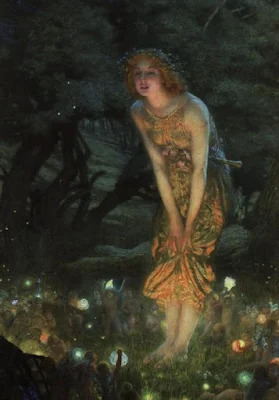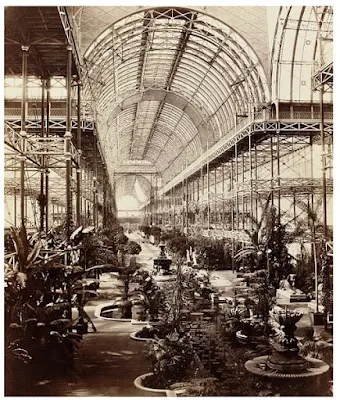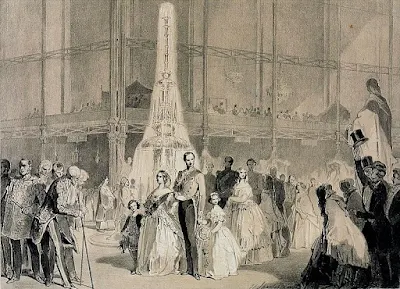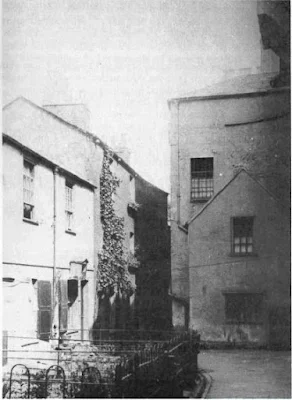Power of sea be yours,
Power of land be yours,
Power of heaven.
WEST HIGHLAND BLESSING
The great Celtic scholar Dr. Anne Ross once said, 'Everyone with European roots can consider themselves of Celtic origin.' People who are not directly descended from Irish, Welsh, or Scottish families tend to think they have no Celtic roots, but in reality so many different European tribes contributed to the creation of Celticism, and over thousands of years such a mixing of populations has occurred, that virtually anyone alive today with European ancestry can be said to have Celtic origins.
Samhain Goddess, 'The Crone' by Angela Jayne Barnett
The old people had runes which they sang to the spirits dwelling in the sea and in the mountain, in the wind and in the whirlwind, in the lightning and in the thunder, in the sea and in the moon and in the stars of heaven. I naught but a toddling child at the time, remember well the ways of the old people ~ Carmina Gadelica
The early Celts divided their year into halves, called in Old Celtic gam, winter, and sam, summer. These words also have deeper resonances of meaning as dark/light, female/male, rest/work. Samhain at the end of October and beginning of November marked the start of winter, and evidence suggests it may also have been the Celtic New Year, for the Celts reckoned the birth of the year from the darkening months, and likewise, their days began at dusk.
OCTOBER
THE FESTIVAL OF SAMHAIN
I have tidings for you;
The stag bells,
Winter snows,
Summer has gone.
The Otherworld is related to Eternity and best explained by Caitlin Matthews in her book, 'The Celtic Tradition':
"Perhaps more than any other people, the Celts have always cherished the country of their true home -the Otherworld. It is the source of their wisdom, the place of their gods, the dimension in which poets and wanderers are most at home. Whoever has visited the Otherworld becomes more than mortal... The realms of the Otherworld are of the ever-living, where everything is possible, where great deeds are accomplished...".
Hence, the Otherworld is the dwelling place of the Heroes, the Blessed ones whose qualities made them superior. It is AVALON, the "Apple-isle", a paradise across the sea, where the gods and heroes feed on apples of immortality.
Pomona, 1885 by William Morris & Edward Burne-Jones
Together with his and Burne-Jones’s tapestry of Pomona, he captures the Goddess of Fruit & Harvest in a poem:
I am the ancient apple-queen,
As once I was so am I now.
For evermore a hope unseen,
Betwixt the blossom and the bough.
Indeed Morris proves her to be “betwixt the blossom and the bough”,
as acanthus leaves and flowers swirl about her. She appears supported by
a tumult of nature, as the foliage seems to teem with the movement of
her life around her. The leaves possess that lively movement of nature
that Morris injects into all his designs, so our eyes have no choice but
to follow the leaves as they dip and dive; we are caught, and here
Morris shows us the power of just one of the figures that he seeks to
personify. A source, Morris uses such figures to truly weave enchantment
into his depictions of nature.As once I was so am I now.
For evermore a hope unseen,
Betwixt the blossom and the bough.
Samhain is the celebration of the Life which never dies. It's the time to harvest the fruits and to keep the seeds to initiate a new cycle. The celebration of the never dying spirit is expressed in many ways at Samhain: Apples and nuts are associated with Samhain and Halloween, as symbols of Eternity and hidden Wisdom. The Apple is the fruit of the Otherworld growing in Avalon. When cut crosswise, the apple displays 5 seeds embedded within a five-branch star, symbol of the Welsh Sow Goddess Cerridwen (the Morrigu) and of the spiritual quintessence ("fifth essence"). The apple then came to be known as the "fruit of the Gods". Apples and nuts are also found on the "silver branch" carried by the poets, or fili, since poets draw their inspiration from the ever fertile Otherworld. Another reminder of Eternity at the door of the dark season was the mistletoe. The sacred mistletoe grows upon the oak, drawing its life-force from the essence of the King of the trees. "At Samhain, a sheaf of corn, a branch of evergreen or mistletoe symbolically carried on the dying powers of vegetation. Carrying or decorating with evergreens demonstrates that life has not died.
The invisible realm is the "Underworld"quite distinct from the Otherworld. This element of the Celtic cosmology rooted in older native beliefs was not conceived of as a hell or place of punishment. It was the well of the primal forces of Life, before and after creation; the place where that which was not yet encountered that which was not anymore. It is the realm of the ancestors, exemplified by the ever turning wheel, "the mill in which the gods of the underworld reside, in which the dead are remade, and initiates reborn.
The different worlds -visible and invisible- are not separate; there are bridges. Many gifts pass between mortals and the Otherworld folk: the power of healing, the power to sing, to make music or create poetry. The faery mounds, or sidhes, are the homes of the Otherworld beings, still known in every Celtic country as the Little people: the brownies, the elves, the fairies, the corrigans, the goblins, the gnomes, etc.
Midsummer Eve by Edward Robert Hughes, 1908
Samhain inaugurated the Celtic year, but also the beginning of
the season of cold, dearth and darkness. At Samhain, beasts were rounded up and
brought into stockades for wintering over, excess livestock was slaughtered
since they could not be kept alive during the hard months of cold and dearth of
grain (the herds would be driven out at Beltain). The slaughter took on a ritual
and sacrificial aspect.
As the cold was intensifying, bonfires were lit. Their purpose was double: encourage the Sun as the Life-giver (sympathetic magic), and draw upon the elemental quality of fire, as an agent of purification. As at Beltain bonfires, people jumped over them and cattle were driven through them; it was a way of getting rid of evil influences, but also of ridding the cattle of parasites.
As the cold was intensifying, bonfires were lit. Their purpose was double: encourage the Sun as the Life-giver (sympathetic magic), and draw upon the elemental quality of fire, as an agent of purification. As at Beltain bonfires, people jumped over them and cattle were driven through them; it was a way of getting rid of evil influences, but also of ridding the cattle of parasites.
As the boundaries
between the realms faded away, it was the perfect time for divination and the
reading of omens, such as placing two nuts in the fire for lovers -burning
steadily denoted constancy, popping was inconstancy. It was a time for
storytelling, poetry, singing and playing tricks, evoking the ancestors and the
glorious deeds of the heroes.To the Celts, magic was not about
"weird" or "occult" practices. It was only the invisible made visible; the tree
seen in the seed. Needless to say, the Druids were the experts of this art and
science, the ones who had a perfect knowledge and control of the complex forces
of Nature.
Two Pre-Raphaelite paintings below are left to right: The Magic Circle by J.W. Waterhouse, 1886, housed at Tate Gallery and Morgan leFay by Frederick Sandys, 1864, housed at Birmingham Art Gallery.
Because of its Death-Life double aspect, Samhain was under the
influence of Goddesses as The Cailleach, Cerridwen (the Morrighan) and Dana.
These are key elements in the understanding of the symbolism of Samhain, but
also of Halloween, since these deities are the very ancestors of our modern ugly
witch! As Caitlin Matthews explains: "One of the oldest deities, perhaps a truly
native goddess of Britain and Ireland who was incorporated into the Celtic
tradition is the Cailleach or the Old One... About her are found fragmentary
stories concerning the control of the weather and the formation of mountain
ranges. She is the Mountain Mother of native tradition who has submerged in
Celtic story, occasionally appearing as a helper or a hinderer of the hero. Like
the British Cerridwen, she guards a cauldron into which the heroes are thrust to
be healed and hardened. She sometimes appears in the aspect of the Dark Woman of
Knowledge, disguised as an ugly young woman who nevertheless possesses great
wisdom. The fragmentary myths which remain embedded in Celtic folklore speak of
her pursuit of the Hero, who is often her own son. By harrying the hero, she
forces him to grow and develop wisdom.The Morrighan draws directly on the
Cailleach's character... As territorial ancestress of the land, she proclaims
the peace, but she does not cease prophesying, going on to foretell a world in
which the natural order is overtaken by unnatural disaster. Her prophetic voice
echoes long down to our own times, for the Cailleach is both the giver and the
taker of life and she outlives the ending of the world by renewing it within
herself.
These
deities related at the same time to Death and Life (renewal) show how rich
the Celtic view of Life and the World was, as the Celts knew to welcome and
integrate the "night-forces", along with the "day-forces". Today's witches (that
we display at Halloween) have become the image of exclusively 'evil' and
negative aspects. We have forgotten that they also are the messengers of wisdom!
SOURCES
The Celtic Tradition by Caitlin Matthews, Element Books Ltd; illustrated edition edition (December 1996).
Kindling The Celtic Spirit: Ancient Traditions to Illumine Your Life Through the Seasons by Mara Freeman, Harper One; 1st edition (December 26, 2000).
SORCERER
STEVIE NICKS
Please feel free to leave comments,




































